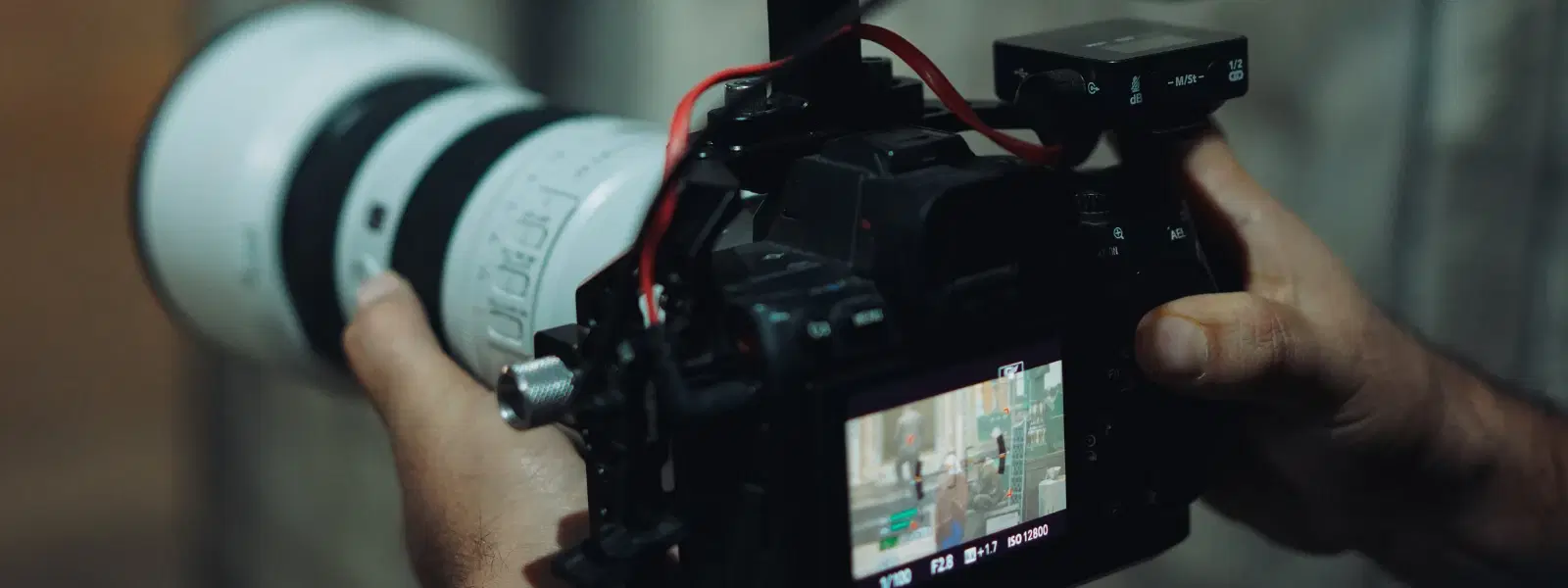
Consumer Electronics
•03 min read
Choosing the right lens can make all the difference in capturing your creative vision. In this guide, we walk you through the key differences between two popular lenses: the Sigma 24-70mm f/2.8 and the Canon 24-105mm f/4. Whether you are an avid photographer or a budding videographer, understanding these features and performance metrics will help simplify your decision-making process.
The Sigma 24-70mm f/2.8 is a zoom lens designed to deliver exceptional performance in low-light conditions thanks to its constant f/2.8 aperture. This lens is particularly loved by those who enjoy portraits, events and indoor photography. It offers stellar image quality, including enhanced sharpness and improved optical stabilisation that many users find essential for capturing those perfect moments.
On the other hand, the Canon 24-105mm f/4 is known for its versatility. With a constant f/4 aperture, it offers a broader focal range, making it suitable for travel, landscapes and general-purpose photography. Its lightweight design makes it an excellent companion for those who travel often or need a go-to lens for everyday shooting.
When comparing the two, the difference in aperture - f/2.8 for the Sigma and f/4 for the Canon - has a significant impact on performance. The Sigma excels in low-light situations, while the Canon provides a versatile focal range, perfect for a variety of outdoor and travel scenarios. Additionally, differences in weight and build might affect your comfort during longer sessions, and compatibility remains an important consideration depending on your camera setup.
This lens is renowned for its exceptional sharpness across its focal range. The large f/2.8 aperture not only enhances low-light performance but also produces a desirable background blur, making subjects stand out. Minimal chromatic aberrations and reduced distortion are also significant factors that many photographers appreciate, especially in challenging lighting conditions.
The Canon lens is celebrated for its adaptability. With its expansive 24-105mm focal range, it can handle everything from sweeping landscape shots to intimate portraits. Although the constant f/4 aperture might not gather as much light as the Sigma's f/2.8, it still manages a pleasant depth of field and an attractive bokeh effect, which can be more than adequate for many everyday photographic situations.
The Sigma 24-70mm f/2.8 stands out for its superior low-light performance and ability to create a stunning bokeh effect. However, its design may lend itself to being slightly heavier. The Canon 24-105mm f/4, with its wider focus range, appeals to those who need a versatile option for diverse shooting scenarios, though it may not perform as well in extremely low-light conditions. Consider the strengths and potential shortcomings of each lens to match your photography style and needs.
For those leaning towards videography, the Sigma 24-70mm's constant wide aperture provides excellent clarity and a cinematic feel in low-light scenes. Its autofocus system is sharp and responsive, making it easier to capture dynamic footage even during fast-paced events.
The Canon 24-105mm is designed with versatility in mind. The broader focal range accommodates a variety of shooting conditions, and its lightweight build facilitates handheld videography. Its stabilisation is also beneficial for maintaining steady shots, even when you're on the move.
Pro Tip: Choosing the Best Lens for Videography
Did you know? For videography, the Sigma 24-70mm excels in low-light environments, while the Canon 24-105mm offers unmatched versatility for on-the-go shooting.
Before making a decision, it is important to weigh up factors such as budget, intended use, and camera compatibility. The Sigma 24-70mm f/2.8 promises superior low-light performance and dramatic image quality, which might come at a premium. Meanwhile, the Canon 24-105mm f/4 offers a broader focal range that can be more adaptable for everyday shooting and travel. Additionally, keep in mind that making a smart investment also means enjoying rewards such as NeuCoins when you shop on platforms like Tata Neu, making every purchase even more valuable.
Feedback from users of the Sigma 24-70mm often highlights its crisp image quality and excellent performance in less-than-ideal lighting. The Canon 24-105mm, however, receives praise for its versatility and ease of use, especially amongst those who value a lightweight, travel-friendly design. By considering these experiences, you can better assess which lens aligns with your photographic needs and personal style.
Sigma lenses are known for their affordability and high image quality, while Canon lenses often offer broader compatibility and reliability with Canon cameras.
The Canon 24-105mm lens is ideal for travel, landscapes and general-purpose photography due to its wide focal range and lightweight design.
Yes, the f/2.8 aperture of the Sigma 24-70 makes it excellent for low-light photography, offering improved light-gathering capability and sharper images.
Sigma lenses are compatible with Canon cameras, supporting EF or RF mounts depending on the model, and provide a robust alternative to Canon’s native lens offerings.
Both the Sigma 24-70mm f/2.8 and Canon 24-105mm f/4 bring their own set of advantages to the table. The Sigma is especially captivating for those who prioritise low-light performance and the creation of a beautiful bokeh, while the Canon is well-suited for those who need a versatile travel companion that caters to a range of shooting styles. By considering your specific requirements in photography or videography, as well as the rewards you can earn, including NeuCoins on Tata Neu, you can confidently select the lens that best fits your creative journey. Happy shooting!